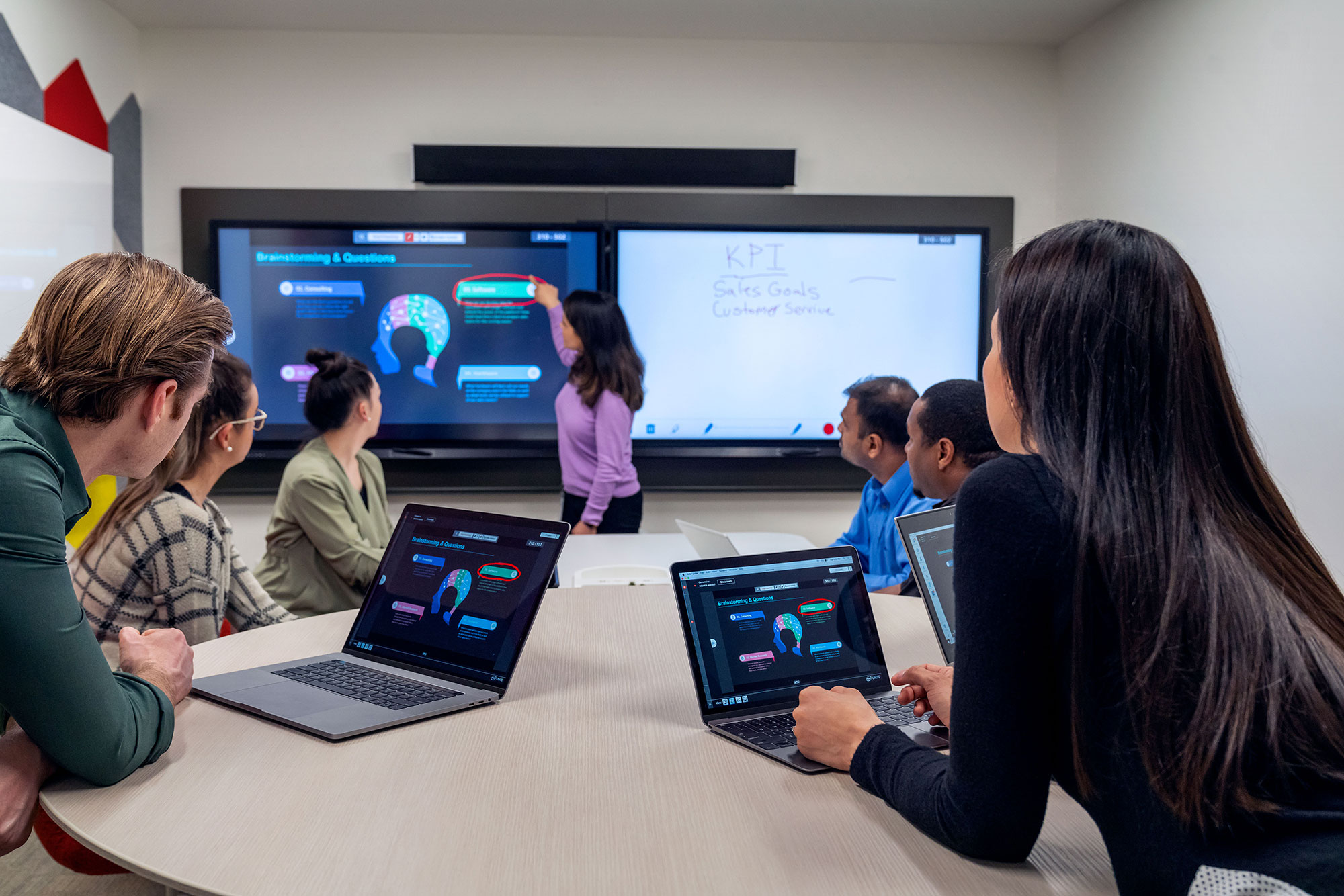Intel Unite Review
Jeremy Caldera reviews Intel Unite, a wireless collaboration and content sharing solution that runs on a standard PC that makes meeting rooms remotely manageable and more secure.

The Intel Unite system is a simple, powerful, and versatile conferencing and collaboration solution. It allows users to create a scalable conferencing solution with a standard PC—so long as that PC is an Intel I5 or better for the advanced video encoding features it provides.
Deploying this system could not be easier. Once the software is on the PC that will be hosting, all that is needed is to install the Intel Unite app on any device that you want to have participate and type in the number displayed on the screen to join. However, you must be on the same network as the device to communicate.
But ease of use isn’t the only advantage of using this system. Most collaboration systems require some sort of internet connectivity, or may even open the network up to intrusion if the security is not properly configured. The Intel Unite system does not have this problem, as no internet connection is required to operate it and your company’s existing IT policy should treat it the same as any other PC.
[How to Think About Network Security After COVID]
The system also allow you to transfer files between users, even if one is using Linux and the other is on an iPhone. It does this by creating a temporary local file server. After the meeting ends, the system purges the data from any uploads that happened during the meeting. I’m not aware of any other conferencing system that allows file transfers between meeting members without some sort of cloud connection. In most security-concerned organizations. this convenience would be a feature that would have to be prevented. But the way that Intel Unite handles it does not expose secure data to outside sources, which meets the security standards of most organizations. It’s more secure than emailing it as an attachment. Potentially even more secure than network storage.
Educational environments will also love the Unite system because it is easy to install and easy to use. It allows the moderator to preview content before being published to a large screen, helping prevent any potential class clown from hijacking the class. Most importantly, it’s inexpensive compared to other solutions. Users may already have the hardware needed and would simply require an annual subscription.
[The Integration Guide to Education]
A daily selection of features, industry news, and analysis for AV/IT professionals. Sign up below.
Integration to existing collaboration structures is also easy; it can be used as an endpoint for software like Teams or Zoom, or used as a standalone system—or even a portable collaboration solution. It supports all the peripherals that a standard computer would, and with the correct PC, could have up to eight displays running. There isn’t a finite limit to the number of users that can connect, either—making it ideal for lecture halls where the users would like to stream the content directly to their phone or computer.
The Intel Unite system can be customized to solve a large variety of problems and special use cases. The hardware being a standard computer gives it far more flexibility than any proprietary system ever will have, and it helps that users are not introducing a new device that the IT department will be resistant to supporting.
Bottom line: It does not even seem possible to simplify a collaboration system further than this.
Jeremy Caldera, CTS-D, CTS-I is an expert in the professional audiovisual industry with over 25 years of experience. Currently a senior vice president of audiovisual technology at Pearl Technology, a leader in AV and IT services based in Peoria, IL, Caldera specializes in the planning and design of audiovisual systems, organizational management, employee motivation, and the development of corporate standards and business growth strategies. Caldera is also a partner at BNCO Consulting and Top Shelf Digital Media.
Caldera is passionate about sharing his knowledge with others. He worked with his alma mater, Columbia College, to form a partnership with the Audiovisual and Integrated Experience Association (AVIXA) to develop an Audiovisual Systems Integration concentration within the college’s Audio Arts and Acoustics department. This partnership served as a model for what is now a major tenant of the AVIXA Foundation, which provides access to skills education, career pathways, and hands-on experiences to inspire the next generation of leaders in AV.
Caldera is an active volunteer both within the pro AV industry and his community. He previously served as the chair of AVIXA’s Certified Technology Specialist (CTS) Certification Program where he oversaw the development and administration of CTS, CTS-D, and CTS-I certifications. From 2017 to 2019, Caldera was a member of AVIXA’s Leadership Search Committee which appoints and develops mentors to serve on the AVIXA Board of Directors. He also is the chair of the committee for the renewal of the AVIXA/ANSI 2M standard. He currently serves on the board of directors for the Junior Achievement of Central Illinois and the Morton Premier Soccer Club.
Caldera holds a B.A. in Audio Arts and Acoustics from Columbia College, and has won several industry and community awards and honors, including: Systems Contractor News Hall of Fame (2021); iBi’s Peoria Top 40 Leaders under 40 (2017), the NSCA’s Randy Vaughan Founders Award (2017), AVIXA’s Educator of the Year (2017), Commercial Integrator’s 40 under 40 (2015), and AVIXA’s Young Professional Award (2015).

